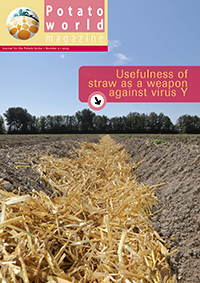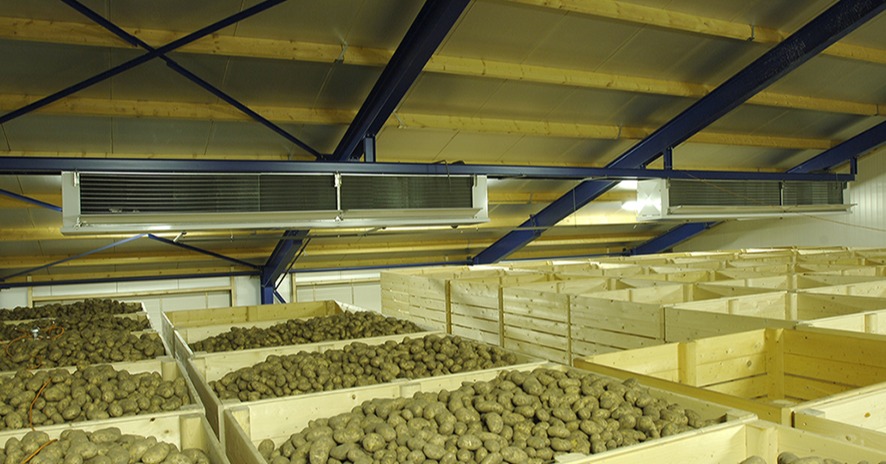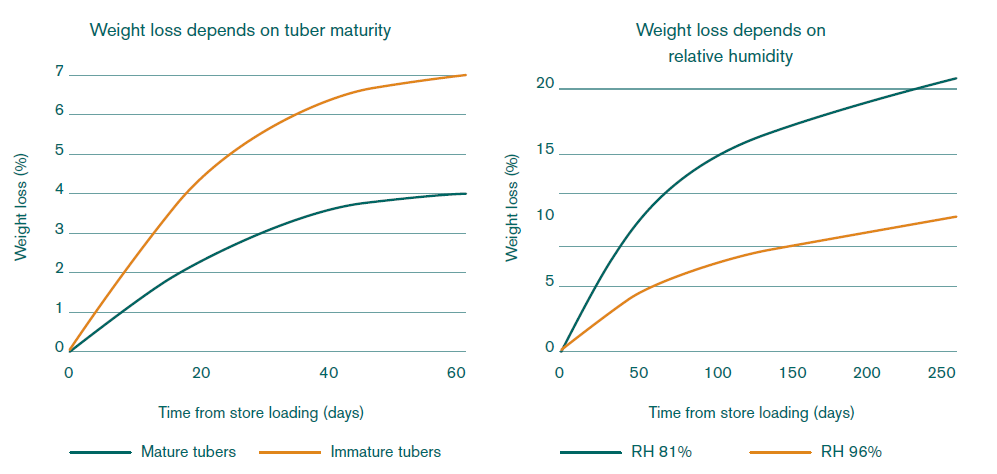Already a subscriber? Activate your premium account

Potatoworld Magazine

Potato tubers lose weight while being stored. The main contribution is loss of water through the skin by evaporation.
The rate of evaporation is higher when the air surrounding the tubers is dryer and contains less water. At its dew point, when the water vapor in the air condensates and forms dew on objects such as a thermometer, the relative humidity of the air by definition is 100 percent. When the air at the same temperature contains half that amount of water its relative humidity is 50 percent.
Skin of immature tubers is more permeable and more easily delivers water to surrounding air than that from older tubers. The drier the air the greater the weight loss. The drier the air the more rapidly a tuber absorbs moisture from a relatively humid surface. Immature tuber surfaces have a thinner and less corky skin than well cured mature tubers. Growers take advantage of this knowledge by collecting tubers that are as mature as possible at the moment of harvest. To facilitate curing in the store after store loading, the tubers are subjected to high temperatures and relative humidity (18 °C, 90 percent). The objective of adequate storage practices is to lose as little weight as possible through evaporation and respiration, while maintaining the quality of the product: low sugar content and avoidance of defects such as blackspot, pressure bruise and rotting due to diseases. Expressions conferring this are “storages are not hospitals” and “junk in junk out”.

Events
©2015 - 2024 Potatoworld | Webdesign and realisation COMMPRO